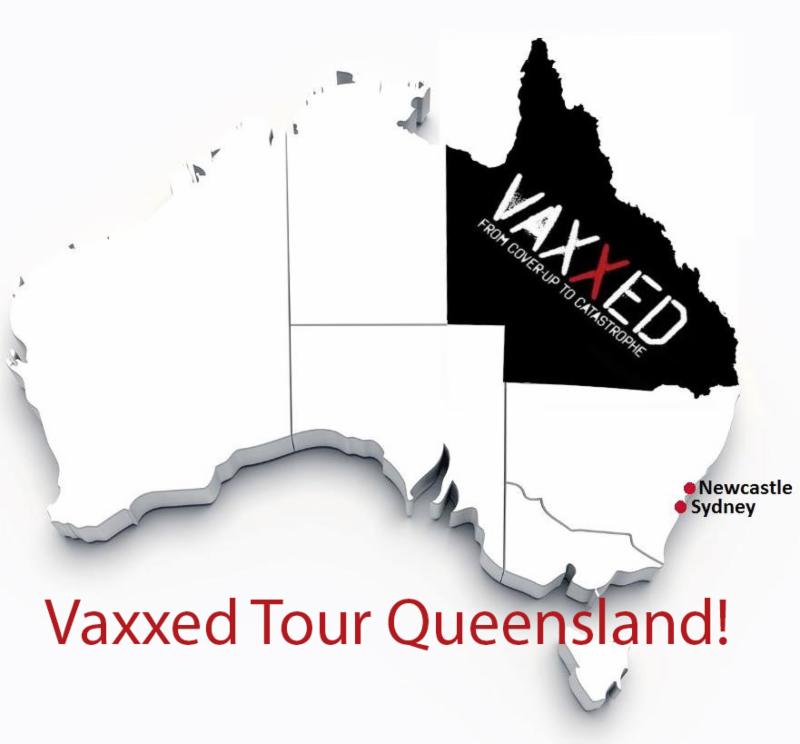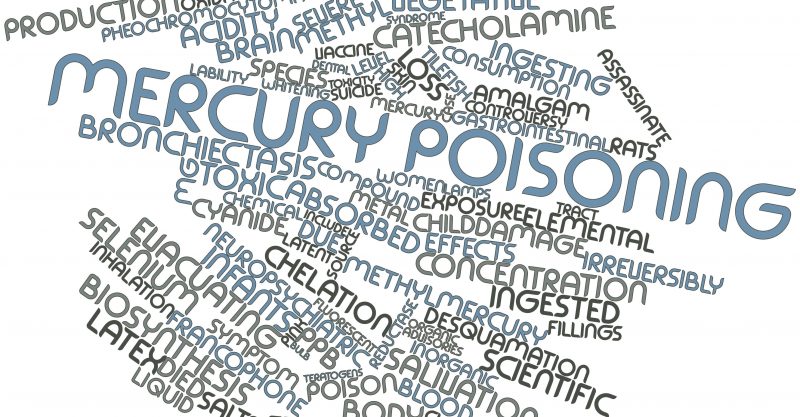1. The Dr Judy Wileyman Report: Newsletters #178 & #179
Newsletter 178 The Australian Government is using Pseudoscience to Remove Vaccination Choice – a Human Right.
15 October 2017
Currently the Australian government is mandating with coercive strategies (financial penalties) 16 vaccines for children up to 20 years of age. There are also many employment situations in Australia that are now mandating these vaccines. Soon all adults will be mandated to have the 16 vaccines plus boosters throughout life – and any of the 200+ new vaccines being developed that the government decides to add to this schedule.
This legislation has been implemented without any scientific debate or public discussion of the risks associated with vaccines in the Australian media. Further, the Australian media has promoted false information about the benefits of vaccines. Doctors and nurses in Australia are also being prevented from discussing the medical risks with the public through their professional regulatory boards.
Evidence for these facts are provided below:
This 18 min video of my speech about Vaccination Choice at the rally in Sydney, Martin Pl (12 September 2017) to protest the introduction of the No Jab No Play policy describes the lack of science in this government policy. The policy was adopted in NSW on the 14 September 2017 by ignoring the public’s concerns – and without discussion with the public.
This 1 hour interview with Sarah Westall on the US radio program Business Game Changers – The Vaccination Debate: Let’s get Serious – describes the political strategies that are being used by governments to manipulate public behaviour on the use of vaccines.
This 50 min video – Questions and Answers: No Jab No Pay/Play Policy – demonstrates the lack of scientific debate by health and government authorities before the No Jab No Pay policy was introduced in Australia in January 2016. It lists all the government officials who declined to attend a public forum at the university to discuss the necessity for this policy. It also discusses the lack of science underpinning the policy and the breach of human rights that has occurred with these polices..
Sweden and Colombia have stated that mandatory vaccination policies violate constitutional rights and they will not adopt these policies because of the serious adverse health outcomes associated with vaccines.
If vaccines to prevent 16 infectious diseases in Sweden are not thought to be beneficial to health outcomes then why is the Australian government claiming that mandatory and coercive vaccination for 16 vaccines (36+ doses), that removes human rights, is needed in Australia when the threat of these diseases is no greater – and vaccination has always been voluntary?
Newsletter 179 University of Wollongong is Promoting Non-evidence based Claims about Vaccines
Please see the letter below that has been sent to the Vice-Chancellor and academics at the University of Wollongong, NSW, Australia:
Open Letter
23 October 2017
To University of Wollongong (UOW) Vice-Chancellor, Paul Wellings
Copied to Professor’s Heather Yeatman, Alison Jones and UOW Academics
Dear Professor Wellings,
The University of Wollongong (UOW) is inappropriately promoting information about the safety and efficacy of vaccines that is non-evidence based. These comments are being used to underpin mandatory and coercive vaccination policies in Australia
The promotion of Heather Yeatman’s (Professor of Nutrition) personal opinion of vaccines is inappropriate because this is not her field of expertise. Further, the promotion of claims made by the Australian government about vaccines and signed by other UOW academics, is also inappropriate because the claims have not addressed the scientific evidence and arguments provided in my PhD thesis – published on the UOW website.
The UOW, that works in partnership with industry, published Heather Yeatman’s personal opinion of vaccines on the UOW website one week after my PhD thesis was published in January 2016.
UOW has also permitted these organised lobby groups to misuse the universities policies to besmirch my research and reputation in the mainstream media.
Here are several statements promoted on the UOW website that are not supported by evidence:
Firstly, the word ‘immunisation’ is misused in these comments. The comments refer to ‘vaccination’ not ‘immunisation’ – these two words have different meanings and they are not interchangeable. I have corrected the use of these words in the comments below.
The following claims that are promoted on the UOW website are not supported by scientific evidence:
- The international scientific evidence overwhelmingly supports immunisation [vaccination] to protect children from infectious diseases.
- Large-scale immunisation [vaccination] programs began in the 1930’s and gathered pace in the 1950’s.
- These vaccination programs led to a 99% drop in deaths from vaccine preventable diseases.
These claims are untrue and/or misleading and they are not supported by the academic literature on vaccination or infectious diseases.
Here are two 7 min videos that describe my research on vaccines at the UOW and the scientific evidence that debunks the claims of safety and efficacy that the University of Wollongong is promoting:
i) The Undone Science in Government Vaccination Policies
ii) Vaccine-created Herd Immunity did not Control Infectious Diseases
In addition, Professor Alison Jones, executive dean of the Faculty of Science, Medicine and Health, has co-authored an article titled ‘Public Health and the Necessary Limits of Academic Freedom’ that argues that academic freedom on vaccination research should be constrained – a strategy that would result in suppressing the scientific debate of vaccination because it would remove some perspectives of the science underpinning vaccines – specifically the risks of vaccination.
Please ensure that you address this information promptly so that vaccination legislation in Australia will protect the health of Australians and will not result in significant deaths and illnesses due to vaccines that are preventable and unnecessary.
Yours Sincerely,
Judy Wilyman PhD
Bachelor of Science, University of NSW
Diploma of Education (Science), University of Wollongong
Master of Science (Population Health), Faculty of Health Sciences, University of Wollongong.
PhD in The Science and Politics of the Australian Government’s Vaccination Program, UOW School of Social Science, Media and Communication (re-named the School of Humanities and Social Inquiry in 2014).
2. AVN: VaxXed QLD Reaches Townsville

3. Robert Kennedy’s World Mercury Project: The Interwoven Global Epidemics of Mercury Toxicity and Autism

However, with the advent of large-scale industrial processes to extract metals from naturally occurring compounds, humans let the genie out of the bottle, contributing significantly to the distribution of mercury, aluminum and other heavy metals in the environment.
When released from nature’s semi-protective hold, these “invariably toxic” metals wreak havoc on living systems, including humans, animals and plants alike.Modern-day scientists have been amassing evidence of mercury’s toxicity for decades, with a growing focus in recent years on the metal’s association with neurodevelopmental disorders, including autism spectrum disorder (ASD).
A new review article in the multidisciplinary journal Environmental Research pulls together a wide body of literature with the aim of summing up current research and emerging trends in mercury toxicology.
Geir Bjørklund, the study’s lead author, is the founder of Norway’s non-profit Council for Nutritional and Environmental Medicine and has published prolifically on topics related to heavy metals, autoimmune disorders and ASD.Multiple avenues of exposureExposure to mercurial compounds remains widespread, despite feeble attempts to ban some uses.
Bjørklund et al.’s review covers all three categories of mercury: elemental, organic and inorganic.
Exposure to volatile elemental mercury can come about as a result of occupational contact or vapor from dental amalgam fillings.
Organic mercury—the most frequent form of exposure, according to Bjørklund and colleagues—exists as methylmercury (in fish) and ethylmercury (in the vaccine preservative thimerosal).
Coal-fired power plants send inorganic mercury into the environment, where the toxic metal works its way up the marine food chain.
Interconversion between various forms of mercury also occurs. For example, elemental and organic mercury can cross the blood-brain barrier and bioaccumulate in the form of inorganic mercury.
Studies also have described “mixed exposure” in the brain to both organic and inorganic mercury compounds.
Multiple mechanisms of toxicity
Mercury exerts toxicity through a number of different mechanisms and has effects at both the molecular and cellular levels. For their purposes, Bjørklund and coauthors zero in on eight interrelated mechanisms, although there are others. Every single one of the toxic mechanisms that they describe has a documented association with ASD.
- Sulfur: A key and widely recognized fact about mercury is that it is “thiophilic,” meaning that it has an affinity for biochemically important sulfur compounds called thiols. Mercury binds to the sulfur-containing amino acid cysteine (which contains a thiol group); this allows mercury to piggy-back into brain cells and other target cells through a phenomenon known as molecular mimicry (meaning that the problematic mercury-cysteine entity “mimics” the useful amino acid methionine).
According to leading toxicologists at the Centers for Disease Control and Prevention (CDC), mercury then “blocks or attenuates [the] protein molecule’s range of availability for normal metabolic function.”
Mercury also reduces sulfate absorption. Individuals with ASD frequently have low levels of sulfate. - Immune activation and autoimmunity: Bjørklund et al. outline numerous mercury-related immune system effects, including “immunostimulation, immunosuppression, immunomodulation, delayed-type hypersensitivity…, and autoimmunity.”
These effects occur largely due to mercury’s influence on immune cytokines—proteins that are important in helping cells communicate. Chronic elevation of inflammatory cytokines and other immune abnormalities such as activation of microglia (immune cells in the brain) are hallmarks of both mercury exposure and ASD. - Protein synthesis: Researchers have reported since the late 1960s that mercury inhibits protein synthesis (a fundamental cell process that involves both DNA and RNA), interfering with cells’ ability to build new proteins. Bjørklund and coauthors report that inorganic mercury is particularly disruptive in this regard. Investigators have postulated that dysregulated protein synthesis, which disrupts the balance between excitation and inhibition in brain cells, plays a causal role in ASD.
- Brain microtubules: Neuropsychiatrist Jon Lieff describes microtubules as “the brains of the cell” and suggests that cerebral microtubules may be “the seat of consciousness.”
Microtubules form the scaffolding required by axons (nerve fibers that transmit neuronal signals).
Mercury preferentially targets axonal microtubules, leading to their “depolymerization and derangement,” according to the Environmental Research authors. Moreover, mercury is unique among toxic metals in having these microtubule effects.
Axonal disturbances and the altered brain connectivity that these disturbances promote are widely documented features of ASD. - Membrane transport: Cell membrane transport refers to the process whereby molecules (such as amino acids) pass into or out of a cell. Mercury can disturb amino acid transport and also “penetrate” across biological membranes. The authors note the need for “approaches to inhibit [mercury’s] transfer both at the placental border and at the blood-brain barrier.”
An international research group recently described the relationship between ASD and impaired amino acid transport at the blood-brain barrier. - Glutathione: Numerous researchers have described how organic mercury, in particular, impairs glutathione activity, thereby lessening protection from oxidative stress and weakening the body’s detoxification capacity.
The relationship is bidirectional, according to Bjørklund and coauthors, because when brain glutathione levels drop, the uptake of mercury in brain tissue increases substantially.
Lowered glutathione levels, elevated oxidative stress and a higher body burden of mercury have been repeatedly documented as core characteristics of ASD. - Metallothioneins: Metallothioneins (MTs), a family of proteins, are antioxidants and metal chelators that work to maintain metal homeostasis. MTs also play an important role in neuroprotection and regeneration. Although MTs are present to “protect the brain and gastrointestinal tract against overload by toxic metals,” Bjørklund and coauthors cite evidence showing that common genetic mutations and variations in MTs may increase some individuals’ susceptibility to mercury-induced neurotoxicity, including individuals with ASD.
Studies have identified “a significant increase in both metal content and metallothionein expression” in autistic children. - Zinc and copper: Appropriate metabolism of zinc and copper is important for healthy neurological functioning. When mercury binds to metallothioneins, it can substitute for zinc and copper, “interact with [zinc] and [copper] availability” and thereby disturb the normal zinc-copper ratio.
In a previous publication, Bjørklund described mercury’s role in disturbing zinc and copper metabolism and the typically low zinc-copper ratio in autistic children.
Other researchers have measured the zinc-copper ratio in plasma as a biomarker for mercury toxicity in ASD children.
Reducing mercury toxicity
Bjørklund and coauthors also devote several paragraphs to a discussion of the essential trace element selenium, which plays an important antioxidant role, among other functions.
The authors note that mercury is highly “selenophilic,” binding to selenium “with an extraordinarily high affinity…when compared with the affinity for sulfur.”
The welcome implication spelled out by the authors—which has been known to researchers for nearly half a century—is that selenium has a “high capability…to reduce the toxicity of [mercury] compounds.”
The authors list several mechanisms whereby selenium can minimize mercury-induced toxicity, such as by improving mercury’s excretion or sequestration and strengthening antioxidative activity.
Autism researchers have identified “a significant elevation of [mercury]…together with a significant decrease in the [selenium] levels in [red blood cells] of patients with ASD when compared to…healthy controls.”
These researchers agree that selenium has an important role to play in reducing mercury toxicity in ASD patients.
Translating research into action
It has been over a decade and a half since a seminal publication in Medical Hypotheses described autism as “a novel form of mercury poisoning” and showed how “every major characteristic of autism has been exhibited in…cases of documented mercury poisoning.”
Ten years later, Kern and colleagues published a detailed consideration of “parallels between mercury intoxication and the brain pathology in autism” in Acta Neurobiologiae Experimentalis.
A 2017 publication in Molecular Neurobiology by autism expert Dr. Richard Frye and others reviews “associations between mercury exposure and ASD subtypes,” even “at doses well below the current reference levels considered to be safe.”
Thus, Bjørklund and coauthors are far from alone in synthesizing the evidence base and drawing attention to the global public health epidemics of mercury toxicity and autism.
Last year, CDC toxicologists published a comprehensive review that specifically focused on the two forms of organic mercury. The CDC authors concluded that there are “many commonalities [and] similarities in the mechanisms of toxic action of methylmercury and ethylmercury,” particularly regarding their association with neurotoxicity and neurodevelopmental disorders such as ASD.
Both forms of organic mercury cause DNA damage (or impair DNA synthesis), affect cell division, decrease glutathione activity and increase oxidative stress, among other similar effects.
These findings are particularly noteworthy in light of Bjørklund and coauthors’ observation that “co-exposure with [ethylmercury] and [methylmercury] might induce more adverse neurotoxic effects than each agent alone.”
Bjørklund’s team calls on researchers to actively investigate these additive toxicological effects.
At the end of the day, as noted by mercury expert Philippe Grandjean, there is a need to move beyond simply generating “endless replications” in the form of “thousands of toxicology publications every year” on mercury and other well-understood toxic metals.
The Bjørklund team’s broad review of over 200 studies—including recent findings as well as articles dating back several decades—shows that we already know more than enough about mercury’s hazards to take decisive action.
Sign up for free news and updates from Robert F. Kennedy, Jr. and the World Mercury Project. Your donation will help to support us in our efforts.
